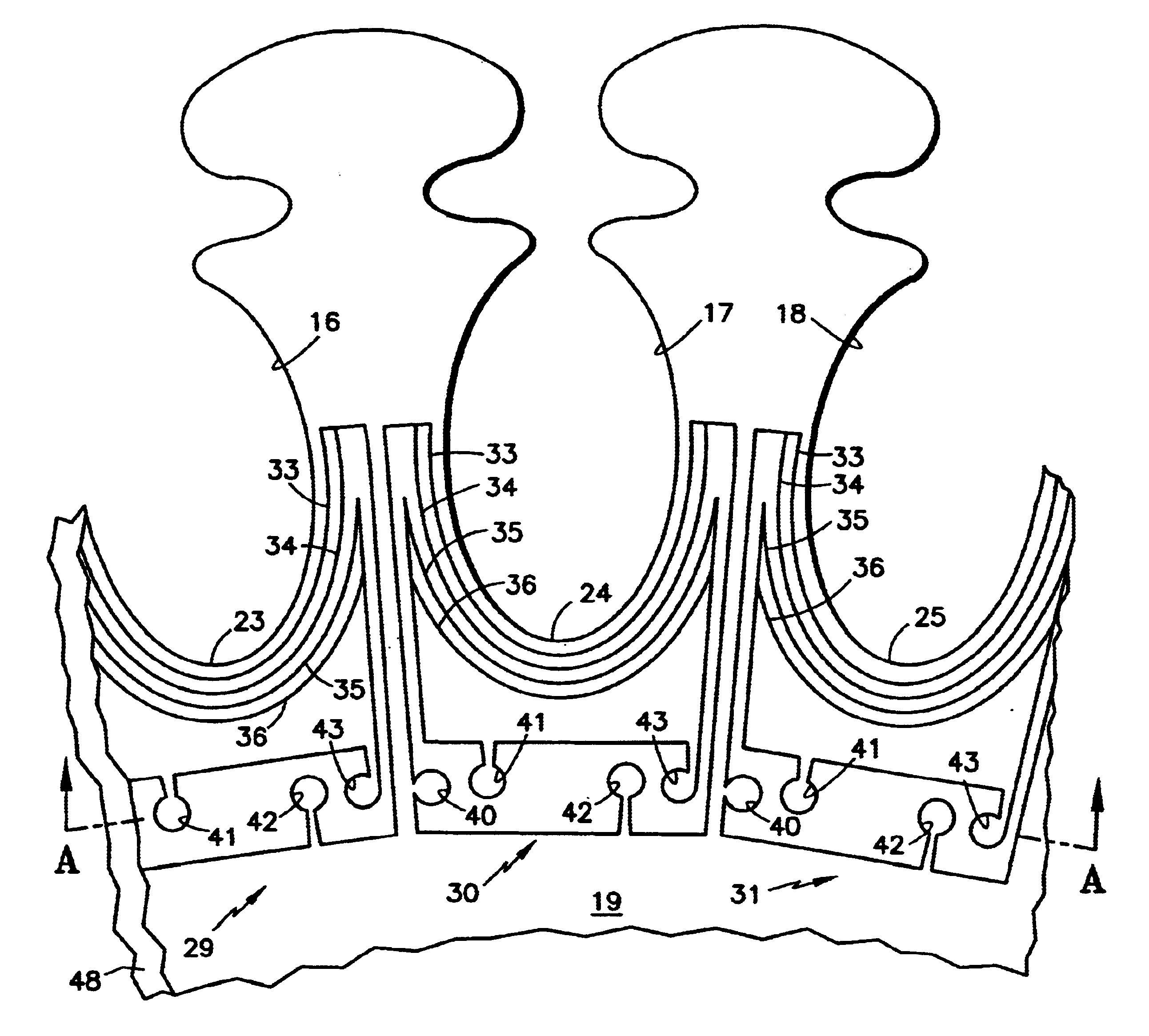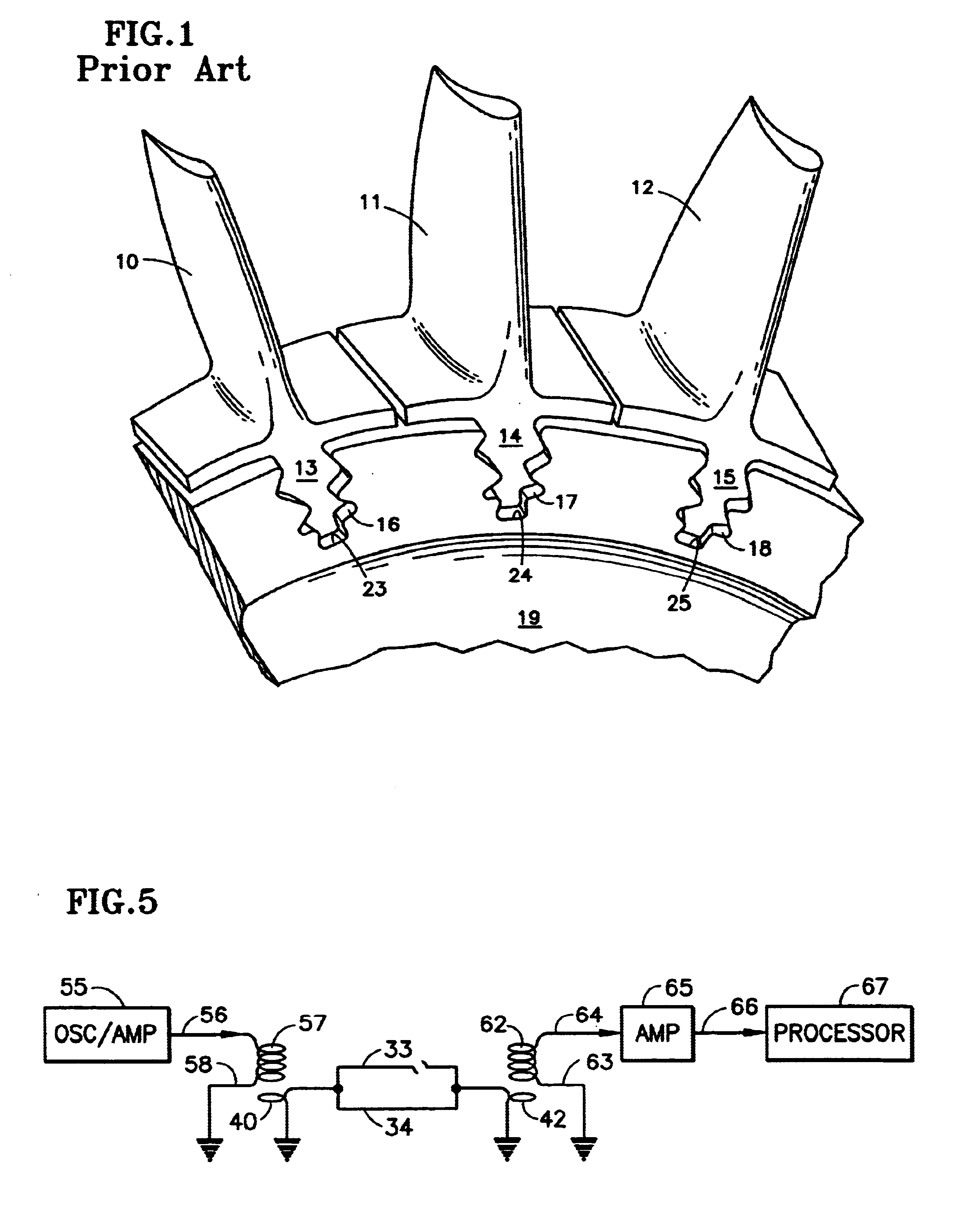Crack detection in fracture-critical machine parts
a technology of crack detection and machine parts, applied in the field of crack detection in fracture-critical machine parts, can solve the problems of unrealistic containment of this type of failure, disassembly, inspection and reassembly over the life of the engine, etc., and achieve the effects of low failure rate, high reliability, and extremely high temperature in the sensor and environmen
- Summary
- Abstract
- Description
- Claims
- Application Information
AI Technical Summary
Benefits of technology
Problems solved by technology
Method used
Image
Examples
Embodiment Construction
Referring to FIG. 1, the blades 10-12 of a gas turbine engine each have roots 13-15 which are captured by corresponding blade root sockets 16-18 in the turbine disk 19. Potential failure of an engine disk is typically preceded by cracks on and near the surface at the base 23-25 of the blade root sockets 16-18.
In FIG. 2, near the bas 23-25 of each blade root socket 16-18, a pair of circuits 29-31 each comprise a pair of wires 33, 34; 35, 36. Each pair is connected to corresponding excitation nodes 40, 41 and corresponding detection nodes 42, 43. In this embodiment, the excitation and detection nodes are inductive, and are represented in FIG. 2 as single turns of wire. In FIG. 3, assuming that the disk 19 is formed of titanium alloy, it may be first given an insulative coating 46, such as alumina on top of which there is deposited a layer 47 of titanium alloy, which after etching will form the circuitry, including the wires 33-36, the excitation and detection nodes 43, and the connect...
PUM
| Property | Measurement | Unit |
|---|---|---|
| electrical | aaaaa | aaaaa |
| magnetic coupling | aaaaa | aaaaa |
| radius | aaaaa | aaaaa |
Abstract
Description
Claims
Application Information
 Login to View More
Login to View More - R&D
- Intellectual Property
- Life Sciences
- Materials
- Tech Scout
- Unparalleled Data Quality
- Higher Quality Content
- 60% Fewer Hallucinations
Browse by: Latest US Patents, China's latest patents, Technical Efficacy Thesaurus, Application Domain, Technology Topic, Popular Technical Reports.
© 2025 PatSnap. All rights reserved.Legal|Privacy policy|Modern Slavery Act Transparency Statement|Sitemap|About US| Contact US: help@patsnap.com



